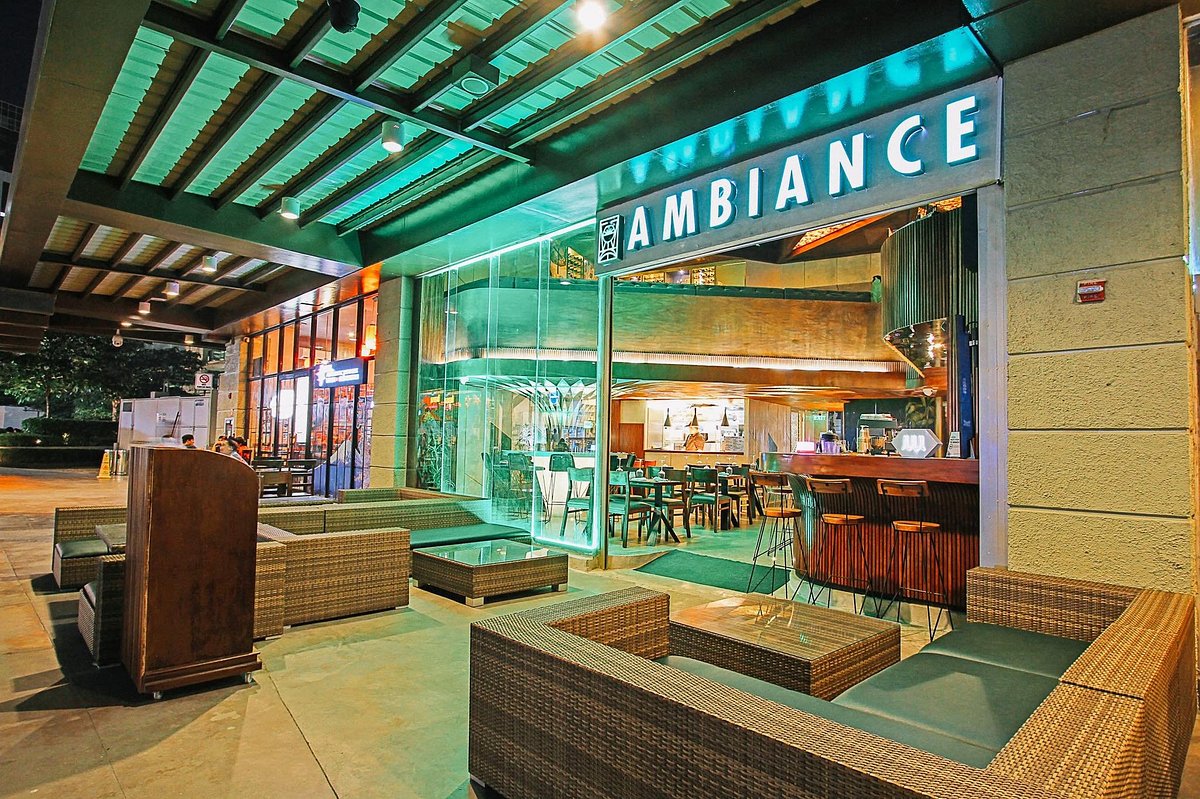Savor Genuine Oriental Cuisine With a Pan-Asian Twist for a Cooking Adventure
Getting started on a culinary trip via authentic Asian cuisine, enhanced with a Pan-Asian twist, offers an unique opportunity to check out the abundant tapestry of tastes that define the region's diverse culinary practices. As you consider these luring dishes, take into consideration the cultural narratives and historic influences that form them, each bite using a story waiting to be found. Romantic restaurants Islamabad.

Checking Out Pan-Asian Tastes
In the world of international gastronomy, Pan-Asian food stands out for its remarkable variety and the unified interplay of flavors from various Eastern societies. This culinary approach celebrates the abundant practices and unique active ingredients discovered across the continent, producing a tapestry of preferences that is both enjoyable and interesting. Trick to Pan-Asian cuisine is its capability to balance contrasting flavors-- wonderful, salted, spicy, and sour-- while highlighting the quality and top quality of each component.
From the umami-rich soy sauce of Japan to the fiery chili peppers of Thailand, Pan-Asian cuisine offers a comprehensive combination of flavors. These elements are often combined in creative means, improving dishes with layers of intricacy. For example, making use of great smelling natural herbs such as lemongrass and cilantro, common in Vietnamese and Thai food, adds a revitalizing illumination to meals, while the unification of coconut milk provides a velvety, rich structure.
The emphasis on fresh produce and aromatic seasonings makes certain that each dish is not only a banquet for the palate however likewise for the senses. Pan-Asian cuisine invites diners to start a cooking journey, exploring the substantial and varied landscapes of Oriental gastronomy with every bite.
Combination Dishes to Attempt
While Pan-Asian food is celebrated for its traditional flavors, the modern-day culinary landscape is increasingly accepting blend dishes that mix these timeless aspects with influences from other regions. This innovative strategy not only honors the rich heritage of Oriental culinary arts but also introduces novel preference experiences that attract modern tastes.
An archetype of such a combination recipe is the Korean-Mexican taco, where seasoned bulgogi beef is covered in a warm tortilla, topped with kimchi and a spicy gochujang-infused salsa. This mix weds the vibrant, tasty tastes of Korea with the vivid, fresh components of Mexican cuisine. Likewise, sushi burritos have acquired appeal, amalgamating the delicate creativity of Japanese sushi with the hearty, hand-held comfort of a burrito, commonly including blend active ingredients like tempura shrimp and avocado with a drizzle of wasabi mayo.
Another notable meal is Thai curry ramen, which instills the velvety, aromatic seasonings of Thai curry into the soothing brew of typical Japanese ramen, creating a harmonious blend that tantalizes the detects. These fusion dishes prolong beyond plain uniqueness; they stand for a culinary dialogue in between cultures, encouraging expedition and technology on the planet of Pan-Asian food.
Essential Components and Spices
To absolutely appreciate Pan-Asian food, one have to recognize the necessary active ingredients and flavors that form its foundation. This diverse cooking design draws from a rich tapestry of Oriental customs, using an unified blend of appearances and tastes. Secret active ingredients consist of soy sauce, fish sauce, and oyster sauce, which present a tasty umami depth important to Asian dishes. Corresponding to these are rice vinegar and mirin, offering a fragile level of acidity and sweetness.
Fragrant elements are crucial, with garlic, ginger, and lemongrass being ubiquitous throughout different Pan-Asian dishes. These ingredients supply a great smelling kanpai base that improves the intricacy of tastes. Flavors such as star anise, cardamom, and cinnamon introduce warmth and character, resembling impacts from regions like China and India.

Cooking Methods and Tips
Understanding the art of Pan-Asian food requires knowledge with its unique food preparation techniques, each adding to the lively tapestry of flavors this cooking custom is celebrated for. Central to these techniques is the stir-fry, a fast cooking strategy that protects the dietary stability and vivid shades of ingredients. Using a frying pan, the stir-fry technique allows for even heat circulation, crucial for achieving the characteristic texture and taste balance of Pan-Asian meals.
Another essential find more method is steaming, especially prevalent in Chinese cuisine. This gentle approach keeps the natural tastes and nutrients of components, making it ideal for seafood and vegetables. Dumplings, a precious staple, typically profit from steaming, resulting in soft, succulent structures.
Barbecuing, additionally important, passes on great smoky midsts to dishes such as Oriental bulgogi or Japanese yakitori (Romantic restaurants Islamabad). This strategy frequently involves seasoning active ingredients, allowing tastes to pass through deeply before food preparation over an open flame or warmer
Last but not least, understanding the art of stabilizing flavors-- wonderful, sour, salted, bitter, and umami-- is important. Properly layering these components can raise a dish from normal to phenomenal, offering a complicated and satisfying cooking experience that personifies the significance of Pan-Asian cuisine.
Eating Experiences Worldwide
Around the world, Pan-Asian cuisine uses an unequaled dining experience, celebrated for its rich tapestry of tastes and vibrant discussions. This cooking sensation has actually transcended social borders, recording the hearts and palates of food lovers worldwide. In worldwide cities like New York, London, and Sydney, Pan-Asian restaurants function as fusions where culinary customs from Thailand, Japan, China, and beyond assemble, offering diners with a diverse mix of meals that highlight the area's variety.
The worldwide allure of Pan-Asian food depends on its capability to offer both authenticity and advancement. Chefs skillfully marry standard components such as lemongrass, soy sauce, and miso with modern strategies, leading to dishes that are both familiar and refreshingly new. This combination allows diners to get started on a cooking trip that values heritage while accepting modernity.
Moreover, eating experiences are boosted through thoughtfully created environments that reflect the principles of Pan-Asian aesthetics. From minimal Japanese-inspired interiors to vibrant Thai-themed spaces, each dining establishment uses a special ambiance that matches the cooking offerings. Therefore, patrons are not go to these guys simply taking in a dish however partaking in a social experience, making Pan-Asian dining a genuinely international phenomenon.
Conclusion
The exploration of Pan-Asian food uses an extensive understanding of the elaborate interaction of tastes and cooking customs throughout Asia. By welcoming combination dishes such as Thai curry ramen and sushi burritos, the culinary journey not only highlights the adaptability of traditional active ingredients yet additionally showcases innovative modern-day techniques. This gastronomic journey, improved by necessary spices and cooking approaches, offers a distinct possibility to appreciate the cultural diversity and cooking artistry that define Pan-Asian cuisine on a global range.
Embarking on a cooking trip through genuine Asian cuisine, boosted with a Pan-Asian twist, provides an unique chance to explore the rich tapestry of flavors that define the area's diverse culinary customs.In the world of global gastronomy, Pan-Asian cuisine stands out for its impressive diversity and the harmonious interaction of tastes from various Asian societies. Secret to Pan-Asian cuisine is its ability to balance different flavors-- sweet, salty, spicy, and sour-- while highlighting the freshness and quality of each ingredient.
